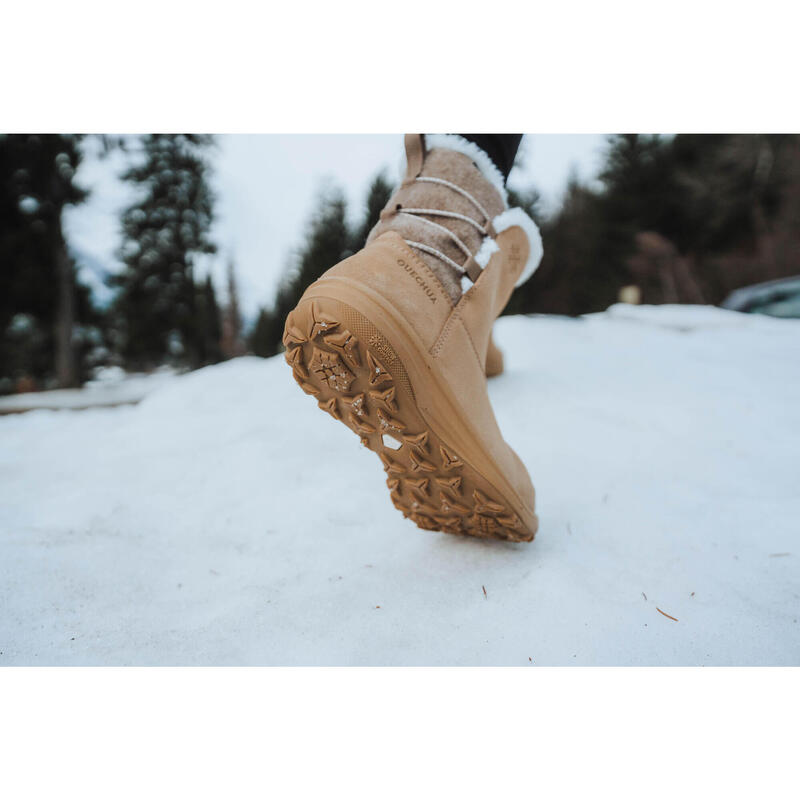Am I sure my boots are warm enough for winter hiking?
We chose a warm, insulating lining to protect you from the cold.
We tested it in the laboratory and in the field with representative users. We checked how comfortable it stays when you're standing still and when you're walking, as this varies widely: -3°C statically and -12°C dynamically. And we took into account the differences in feeling between men and women.
How do my boots protect me from the elements?
Your boots have been designed with a membrane to ensure waterproofing and breathability. A membrane is a very thin component (from 5 to 25 micrometers) affixed to the inside of a fabric that keeps water out while allowing moisture to escape.
How can I be sure that my boots are 100% waterproof?
We've made sure your boots are waterproof with laboratory tests simulating walking with feet half-submerged in water, and with wear and ageing tests in the field.
Advantages of this leather model
Leather is ultra-comfortable, resistant (a natural material) and supple for added comfort.
This material is naturally waterproof and breathable.
Warm in winter and cool in mid-season, leather naturally thermo-regulates the shoe.
We recommend brushing your shoes well (with a soft brush) to maintain them and optimize their longevity.
Extend this shoe's water resistance
For the leather crust, we recommend using a waterproof spray to waterproof and protect it from stains (write "waterproofing spray meindl wet proof" in the search bar of the website Decathlon).
Do not grease. You can use a maintenance brush: type "trekking shoe maintenance brush" in the search bar on the Decathlon website.
What's the difference between grip and adhesion?
Boot grip depends on the number and shape of studs. Grip, on the other hand, depends on the materials and treads used on your soles, much like the tires on your car. Grip optimizes propulsion, prevents the boot from skidding backwards when climbing and stabilizes the boot.
Grip prevents the boot from slipping and skidding on smooth terrain or in demanding conditions (rain, snow, ice), by providing grip to the sole.
Will my boots stand up to regular use over time?
Our engineers conduct laboratory tests to guarantee your complete satisfaction in use. We validate the following elements, among others: eyelet and strap resistance, bonding, toxicology, UV resistance, abrasion of sole and upper components, accelerated aging.
How do I get the right footwear for hiking on snow?
To get the best outfitting for winter, we recommend the following principles:
Warmth: warm socks (ideally with a suitable % wool)
Breathability: choose socks according to the intensity of the hike, and in particular choose breathable models to limit humidity.
Shaft height: adapt the height of the sock to the height of the shaft, and prefer high models if you're looking for more protection.
Weight
36 : 0.9 kg
37 : 0.95 kg
38 : 1 kg
39 : 1.1 kg
40 : 1.2 kg
41 : 1.25 kg
42 : 1.3 kg










